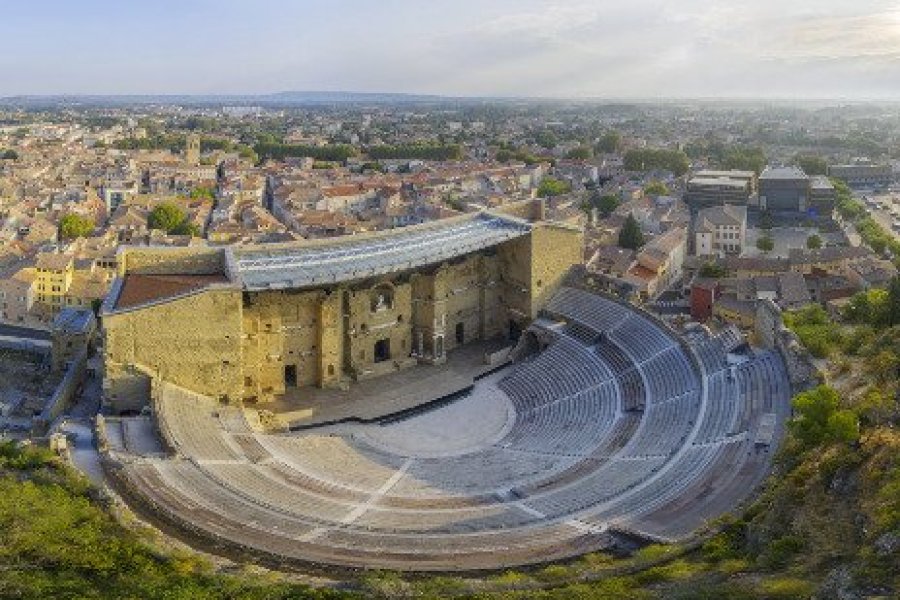When you contemplate this charming medieval village of 80 inhabitants, clinging to a rocky outcrop and dominated by its perched church, it's hard to imagine the richness of its past. And when you lose your gaze in the blue-green waters of the Estéron, which flows at its feet, who can say that this tranquil river was once the border between the kingdoms of France and Sardinia, and that customs officers patrolled its banks? The commune has undergone many names and fortunes, but the site of La Roque-en-Provence as we see it today has changed little. At the bottom of the village, we stop in front of the covered wash-house, before discovering the tiny Place Saint-François which houses the Maison du Prieur, in reference to Raymond Féraud, a troubadour from Nice and prior at La Rocca in 1295. It was here that he completed La vie de Saint Honorat, a poetic legend in Provençal. The steep path leading to the church of Sainte-Pétronille can only be found by wandering through steep alleyways and covered passageways. It's a five-minute climb up to a magnificent panorama of the Estéron valley and, opposite, Roquesteron.A little history. La Roque-en-Provence has a fascinating history, closely linked to that of its neighbor, the commune of Roquesteron. The history of these near-twins sums up the ups and downs of the County of Nice. Originally, the territory was occupied by a Ligurian tribe, soon replaced by the Romans. Only the right bank of the Estéron was inhabited, the area now occupied by La Roque-en-Provence. In the 11th century, a lord of the ancient Castrum de la Rocca, Raymond Rostaing, is mentioned as having given land to the Abbey of Lérins to found a priory. In the 12th century, a watchtower and fortified church were built. The name "La Rocca" or "Rocca Sterone" was coined. In the Middle Ages, the village was part of the County of Provence. It was the fief of the Rostaing de Thorame-Castellane family, who married into the Grimaldi de Beuil family. But in 1388, the Grimaldis of Beuil dedicated the county of Nice to Savoy. Rocca Sterone was now part of the Duchy of Savoy, and the village found itself on the border, as the land on the other side of the Estéron was part of the County of Provence. At the end of the 15th century, the left bank (today's Roquesteron) became cultivated and inhabited. The name Roccasterone came to designate the entire area, occupied on both sides of the Estéron. In 1760, the County of Provence joined the Kingdom of France, and the Duchy of Savoy joined the Kingdom of Sardinia. The Treaty of Turin confirmed these alliances. The town of Roccasterone was effectively split in two. The Estéron became a border river. The historic part of the town, on the right bank, took the name of La Roque d'Estéron. The left bank remained Sardinian, and retained the name Roccasterone. The two villages are linked by the Pont de France, via which residents can travel freely. In 1860, Savoie became French and the official border disappeared. Nothing prevented the two villages from reuniting, but they remained separate. The left bank, attached to Puget-Théniers, was initially called Roquesteron-Puget. The right bank, attached to the arrondissement of Grasse, was renamed Roquesteron-Grasse. In 2016, it became La Roque-en-Provence.


